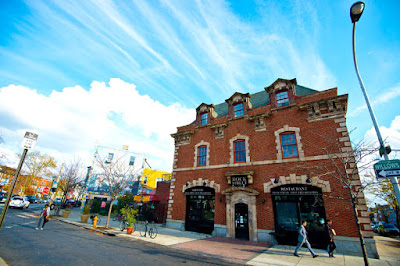River Walk and Bike Trails Food
Wine Ale and Neighborhood Preservation
The Delaware River Valley is the
metropolitan area centered on the city of Philadelphia, the region's major
commercial, cultural, and industrial center. Among the many sights to take in
when visiting the first capital of the United States: The Liberty Bell Center
which houses the American Revolution’s defining symbol, the site of the
meetings of Congress and the Constitutional Convention at the City Tavern in
the Old City as well as Carpenters Hall. In Declaration House, visitors can see
where Thomas Jefferson drafted the Declaration of Independence and Independence
Hall where it was signed.
Greater
Philadelphia Transportation
The
region’s excellent road and rail network make it the perfect location for a
vacation or business trip to the Middle Atlantic States. Philadelphia
International is a major airline hub with daily connections to North American
destinations and from major European cities.
The River and the Environment
The Delaware River is
comprised of 36 tributaries and flows 330 miles from New York to Pennsylvania,
New Jersey and Delaware to the Atlantic Ocean. It extends from the Catskill and
Pocono mountain springs and streams flowing down to the Delaware Water Gap
where steep slopes give way to gently rolling hills and sweeping valleys. Then,
it stretches 134 miles from the Trenton falls to the mouth of the Delaware Bay read
Food Wine Ale Walk and Bike
Trails
The Philadelphia Culinary
Tradition was shaped by several ethnic groups. Cheese steaks and soft
pretzels are well known icons of this city and the 1970s saw a restaurant
renaissance that is continuing into the 21st century. Food traditions include Pepper Pot, a soup of tripe, meat and
vegetables from the Revolutionary War era and Snapper Soup a thick brown turtle soup served with sherry.
Cheesesteaks, hoagies and roast pork sandwiches have helped
Philadelphia become America’s sandwich city.
Neighborhood
and Community Preservation
Lehigh Valley Historic Towns and
Boroughs Allentown Bethlehem Easton Nazareth Hazleton Jim Thorpe Wilkes-Barre.
A thriving
town with roots in the iron industry, by 1829 Allentown expanded from a small
Pennsylvania Dutch village of farmers and tradesmen to a center of commerce.
The Lehigh Valley Gave Birth to
America’s Industrial Revolution
Bucks County is one of the three original counties created by William
Penn in 1682. Bristol is
the oldest town in Bucks County and the third oldest in Pennsylvania. It is the southern terminus of the D&L
Trail characterized by coal
yards, shipyards, warehouses and textile mills.
Chestnut Hill a
beautiful award-winning neighborhood tucked into the northwest corner of
Philadelphia. Renowned for its gardens, art and architecture, parks, shopping
and dining, it is a lovely place to live or visit with many diverse, culturally
enriching experiences.
historic districts
preservation and pirates
Delaware County and River Towns
Marcus Hook’s historical significance comes from its identity as a maritime town.
Originally a Lenape settlement, it became a New Sweden trading post in the
1640s with shipbuilding and fishing as early industries. The Hook was also a
haven for pirates in the early 18th century and its market provided
a place to sell plundered goods and re-supply for their next voyage.
Wayne Lansdowne Historic
Districts the Downtown Wayne district includes approximately 100 properties
roughly bounded by Louella Ct., West Ave., and S. Wayne Ave. Amongst the
buildings is the Anthony Wayne Theatre designed in Italian Renaissance style
and built around 1864
read
Chester County was
established by William Penn in 1682, one of the first three counties in
Pennsylvania; West Chester is the county seat. Other historic towns include
Kennett Square, Oxford and Phoenixville. Each has its own unique agricultural,
revolutionary and industrial histories.
New Castle and Wilmington Delaware founded by the Swedes and Finns in 1638, later acquired by the Dutch
in 1655 and the British in 1739, Wilmington was the last stop to freedom on the
Underground Railroad. Today it offers a rich performing arts scene, great
museums. local wineries and breweries.














